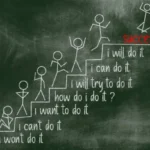If you’ve ever thought about launching your own YouTube channel but felt overwhelmed by where to start, you’re not alone. Starting a successful YouTube channel is not just about hitting record and uploading videos—it requires a blend of creative, technical, and strategic skills. Luckily, anyone can learn these skills and build a channel that grows and thrives. Let’s break down exactly what you need to know!
Understanding the Basics of YouTube
What Makes YouTube Different?
YouTube isn’t just a video-sharing platform—it’s the world’s second-largest search engine after Google. People turn to YouTube for everything from entertainment to education. This means your content can reach millions, but it also means competition is fierce.
Why YouTube is a Powerful Platform
Unlike traditional TV or blogs, YouTube offers instant access to a global audience. Plus, with its recommendation algorithms, your videos can go viral even if you start with zero subscribers. That’s the power and challenge of YouTube.
Content Creation Skills
Finding Your Niche
Before you create anything, you have to figure out what your channel is about. Are you into gaming, cooking, tech reviews, or personal finance? Finding your niche is like picking your playground—it helps you focus and attract the right audience.
Planning Your Video Content
Great channels don’t just upload randomly. They plan. This means scripting or at least outlining your videos to keep them engaging and concise. A little planning prevents rambling and keeps viewers hooked.
Video Production Skills
Shooting Quality Videos
The quality of your video says a lot about your channel. While you don’t need a Hollywood studio, clear visuals and good sound make a massive difference.
Choosing the Right Equipment
Start simple—a smartphone with a good camera works. As you grow, invest in a decent camera, microphone, and tripod. For lighting, natural daylight is your best friend.
Basics of Lighting and Framing
Ever noticed how professional videos never have dark shadows or awkward angles? That’s lighting and framing. Make sure your face is well-lit and centered. Avoid distracting backgrounds.
Editing Your Videos Like a Pro
Editing is where you transform raw footage into a polished final product.
Popular Editing Software Options
Tools like Adobe Premiere Pro, Final Cut Pro, and even free apps like DaVinci Resolve or iMovie are great choices.
Editing Tips for Engagement
Cut out the boring bits, add background music, captions, and smooth transitions. Remember, people have short attention spans, so keep it dynamic!
SEO Skills for YouTube
Keyword Research for Video Titles and Descriptions
Just like Google SEO, YouTube SEO is about keywords. Use tools like TubeBuddy or VidIQ to find what people are searching for and include those words naturally in your title and description.
Optimizing Thumbnails and Tags
Your thumbnail is the first thing people see—make it colorful, clear, and clickable. Tags help YouTube understand your content better.
Audience Engagement
Building a Loyal Community
Engagement means more than views. Reply to comments, ask questions, and encourage viewers to subscribe. Building a community turns casual watchers into dedicated fans.
Responding to Comments and Feedback
Positive or negative, feedback is gold. It helps you improve and shows your audience you care.
Branding Your Channel
Designing a Catchy Channel Logo and Banner
Your channel’s look should be memorable and consistent. A well-designed logo and banner make your channel look professional and trustworthy.
Creating Consistent Video Thumbnails
Use similar fonts, colors, and styles for thumbnails. Consistency helps people recognize your videos instantly.
Marketing and Promotion
Using Social Media to Boost Views
Don’t rely solely on YouTube’s algorithm. Share your videos on Instagram, Twitter, Facebook, and Reddit to attract new viewers.
Collaborations with Other YouTubers
Partnering with others exposes you to new audiences. Even small collaborations can lead to big growth.
Monetization Skills
Understanding YouTube Partner Program
To monetize, you need 1,000 subscribers and 4,000 watch hours. Once eligible, you can earn from ads on your videos.
Alternative Revenue Streams
Think beyond ads—affiliate marketing, merchandise, Patreon, or sponsored videos can diversify your income.
Analytics and Improvement
Reading YouTube Analytics
YouTube Analytics gives insight into what’s working—watch time, demographics, traffic sources. Use this data to improve.
Adapting Based on Viewer Data
If a video underperforms, tweak your content style or topic. If viewers drop off halfway, shorten your videos or add more hooks.
Time Management and Consistency
Creating a Content Schedule
Set realistic goals, like one video per week. A schedule helps maintain momentum and keeps your audience expecting content.
Staying Consistent Without Burning Out
Remember, YouTube success is a marathon, not a sprint. Take breaks when needed, and don’t sacrifice quality for quantity.
Legal and Ethical Knowledge
Copyright Basics for YouTubers
Use royalty-free music and respect others’ content. Violations can get your videos taken down or channels banned.
Ethical Content Creation
Be honest and respectful. Your reputation matters more than quick views.
Conclusion
Starting a successful YouTube channel might seem intimidating, but with the right skills, planning, and mindset, it’s absolutely achievable. From content creation and video production to SEO and audience engagement, every skill plays a vital role. Remember, even the biggest YouTubers started small and learned as they went along. So, grab your camera, get creative, and dive in—you never know where your channel might take you!
FAQs
1. How long does it take to grow a YouTube channel?
Growth varies widely. Some channels explode in months; others take years. Consistency and quality are key.
2. Do I need expensive equipment to start?
No! Many successful YouTubers start with just their smartphones and upgrade later.
3. How important is SEO on YouTube?
Very important. Proper titles, descriptions, tags, and thumbnails help your videos get discovered.
4. Can I monetize my channel immediately?
No, you must meet YouTube’s Partner Program requirements first (1,000 subscribers and 4,000 watch hours).
5. What if I don’t like being on camera?
No worries! Many creators succeed with voiceovers, animations, or screen recordings instead.





